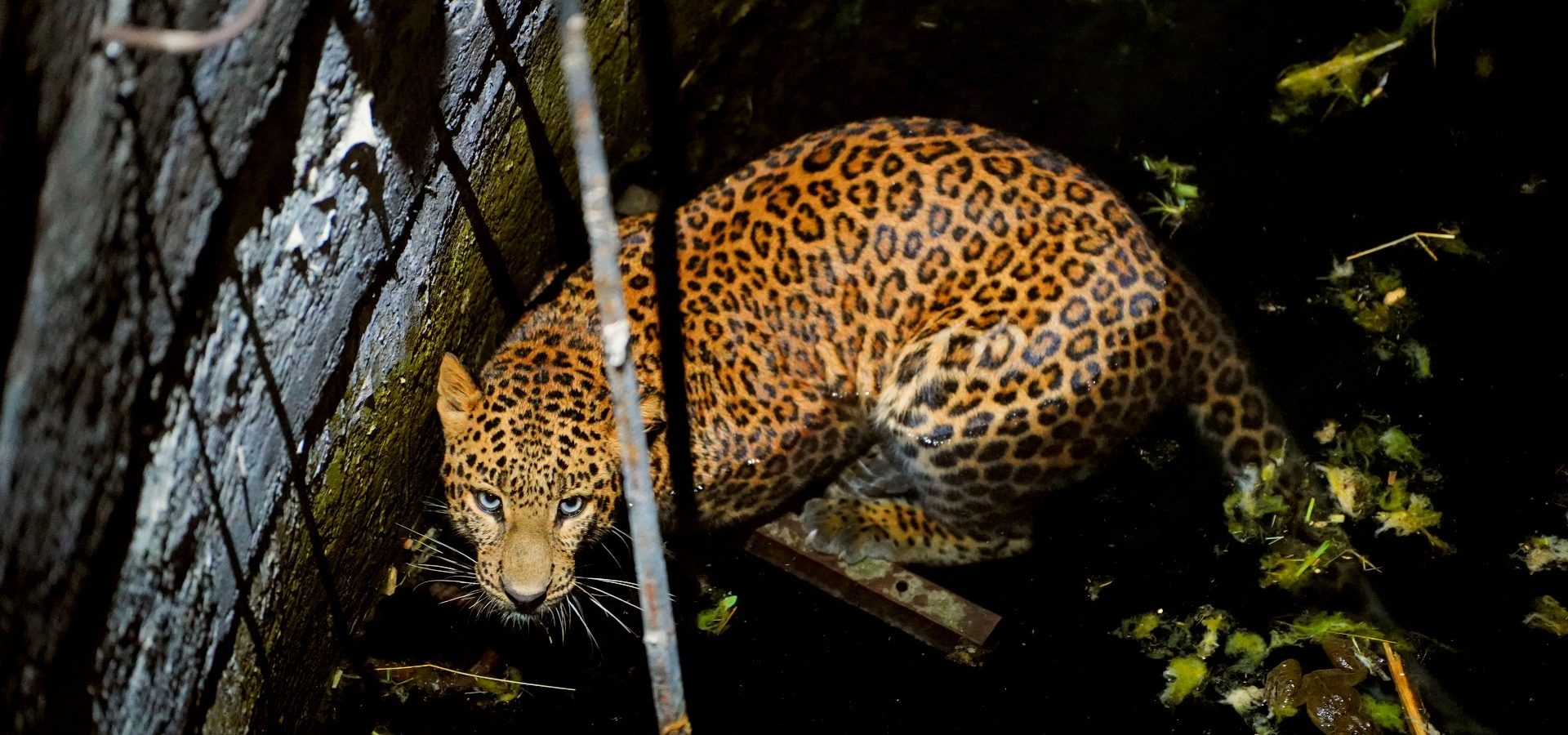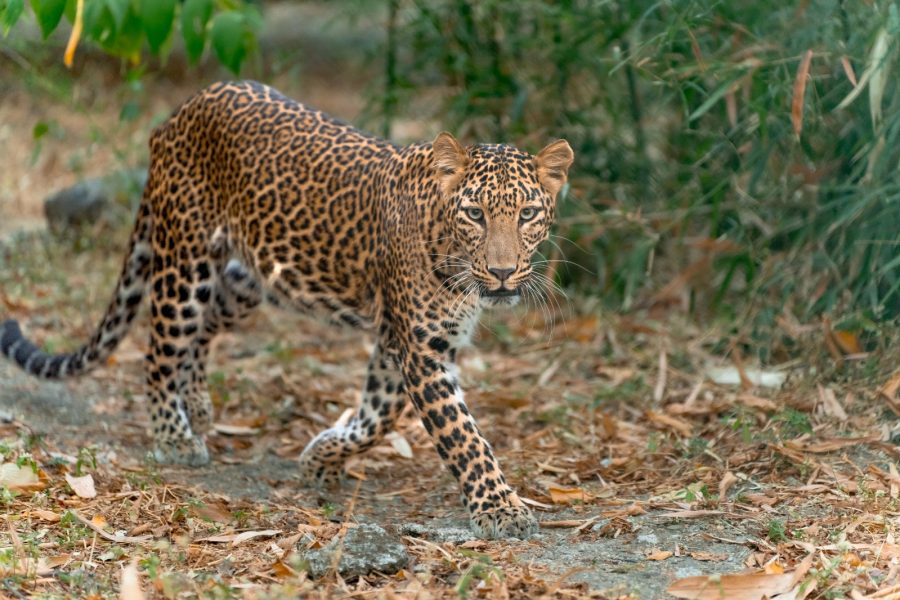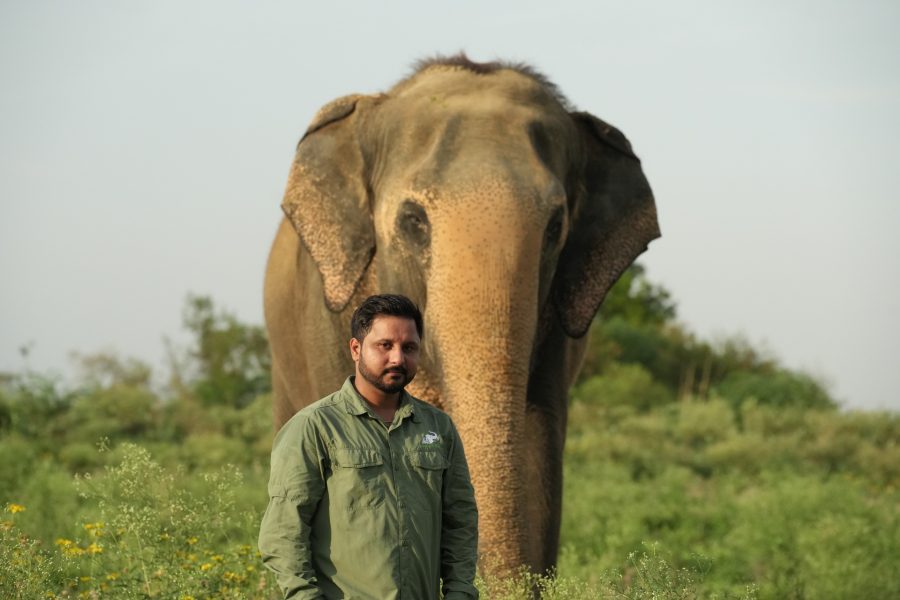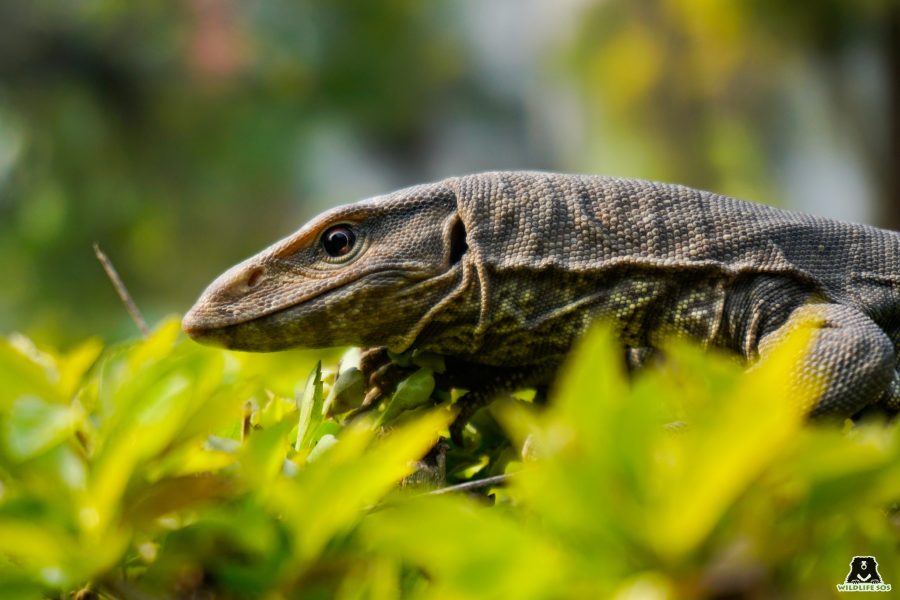As the sun set and the Wildlife SOS Manikdoh Leopard Rescue Centre (MLRC) wrapped up the day’s work, our team received an emergency call about a leopard that had fallen into a well. In a late-night operation, Wildlife SOS and the Maharashtra Forest Department rushed to a village called Navalewadi – which falls under the Otur Forest Range in Pune district – to rescue the leopard in peril.
All Is Not Well
It would have been like any other night had residents of Navalewadi village not heard an unfamiliar sound coming from a nearby well. As the villagers approached cautiously, they discovered that a leopard had fallen into the well which was almost 30 feet deep. The alert villagers noticed the animal struggling to stay afloat and that it was visibly exhausted, and immediately alerted the officials of the forest department who then called the Wildlife SOS team for reinforcement.
Our team had to travel for nearly an hour to reach the location, which seemed longer for the anxious rescuers who were thinking about the plight of the leopard. As soon as they reached the location, the entire area was inspected and the rescue equipment was set up accordingly.
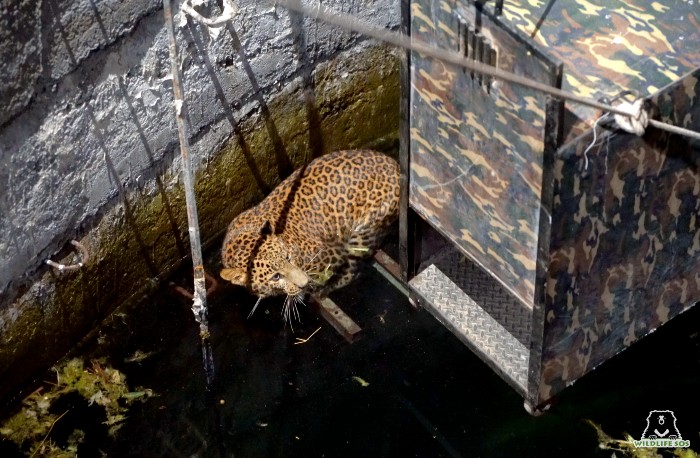
As the night went deeper, things became more complicated as the lack of a proper light source in the dark acts as a challenge, compared to a rescue during the day. But the team managed to hold on. A trap cage was eventually lowered into the well and after a 30-minute long effort, the leopard was safely pulled out. A preliminary health check-up was conducted by the Wildlife SOS veterinarian who determined that it was a female, estimated to be 7 years old. The leopard was declared fit and eventually released back into the wild.
Earlier on the same day, a male leopard was rescued after it was spotted inside a livestock shed close to Pachunda village in Newasa Forest Range situated in Ahmednagar district. Some of the villagers were startled to see the leopard feeding on the livestock and they immediately alerted the forest department, who called the Wildlife SOS team for assistance.
The team travelled over 180 km to assist the forest department with the rescue operation. Upon close inspection, it was found out that the individual was a male, approximately 6-8 years old. As a first step, the team secured the area, following which the Wildlife SOS vet tranquilised the leopard from a safe distance. The leopard was then carefully shifted into a transport cage and handed over to the forest officials.
The Year That Was
The threat of open wells remains a bane for wild animals, especially the nocturnal ones. Most of the time, the animals are unaware that there is a hole in the ground. They might be foraging at night or running across the landscape when they end up falling into this death trap. This year alone, Wildlife SOS had to rush to various locations to rescue leopards from such life-threatening situations.
In February 2022, Wildlife SOS had to conduct two well rescue operations in a matter of days. In the first instance, an approximately 7-year-old male leopard was rescued from a 50-foot-deep well in Alkuti village located in Maharashtra’s Ahmednagar district. A few days later, the team rescued a 4-year-old female leopard from a village in the Pune district. Fatigue evidently took over this young female leopard as she struggled to stay afloat in neck-deep water.
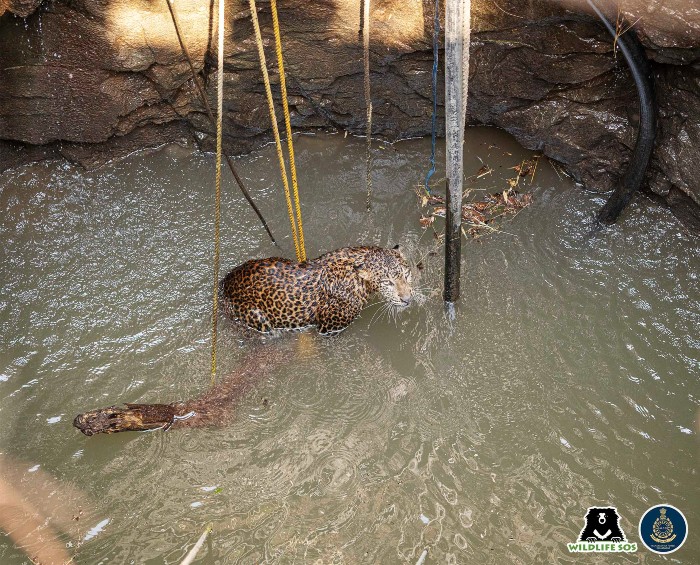
In order to prevent her from drowning, the rescue team first lowered a wooden log into the well for the leopard to hold on to for temporary support. In a nerve-racking operation that lasted two long hours, the leopard was finally extricated using a trap cage. Leopards are expert swimmers but they can become exhausted when trapped in water bodies for hours at a stretch.
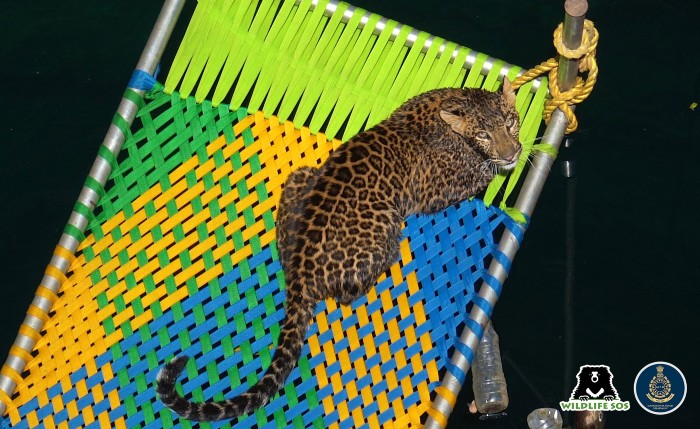
In the month of June, Wildlife SOS saved another leopard’s life who had fallen into a 45-foot-deep well in Belhe village of Pune district. This time the team had come up with a novel solution of lowering a charpai bed to help the nearly 2-year-old male leopard till the time a trap cage was lowered to get him out of the well, and relieve him from that harrowing experience.
Steps Taken By Wildlife SOS
There are numerous wells present across the landscape shared by leopards, Nilgai antelope, Striped hyenas, Sloth bears and jackals, but the abandoned and unprotected open wells pose a serious danger to animal lives. Every village has 30 to 50 wells, some of which can be as deep as 50 to 100 feet and can be hazardous to any living creature who accidentally falls inside, resulting in fatal injuries or even death by drowning.
In Maharashtra, Wildlife SOS gets rescue calls mostly for leopards, followed by hyenas. Wildlife SOS has rescued over 50 leopards from open wells in the last decade alone, flagging this as a serious wildlife conservation issue. After years of rescuing wild animals from open wells, we realised that the problem has to be treated at the root and continuing to rescue the animals was not going to be the only solution. The organisation is now attempting to cover at least 50 open wells across rural Maharashtra.
Wildlife SOS has initiated a participative community project to cover these wells. Filling or sealing them is not an option because most of them still serve the local communities with valuable drinking water. Therefore, covering them is a feasible solution that allows people to access the wells while removing the risk of anyone falling in.
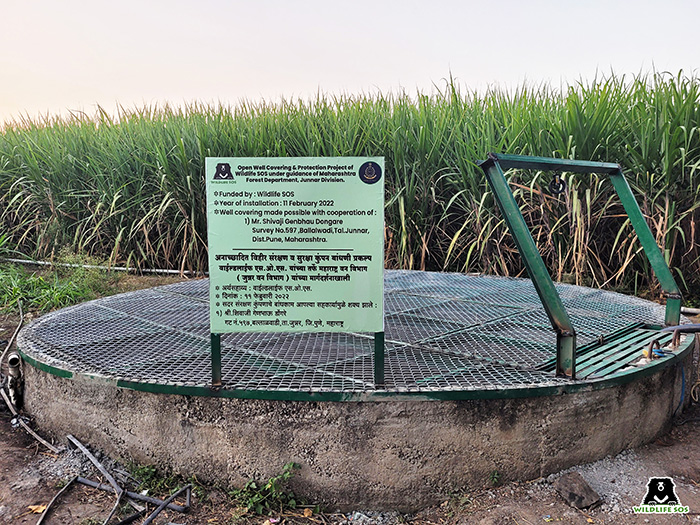
In the first stage of the project, we identified 40 wells that have previously claimed the lives of leopards or where leopards have fallen in and have been rescued. These wells will be covered by fabricating and welding a secure cover that allows safe and secure access to the water. Four wells have already been covered by Wildlife SOS. In the second stage, we will work with engineers to improve well cover design to help water conservation and improve water quality by preventing debris from falling into the wells.
Pulling this off is a daunting task and we need all the resources at hand to make this initiative a success. You can sign this petition to urge the Pune District Collector to identify and cover high risk wells. You can also be a part of this wildlife conservation project by becoming a monthly donor for Wildlife SOS and contribute to this urgent cause.

